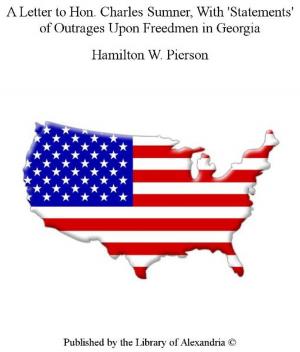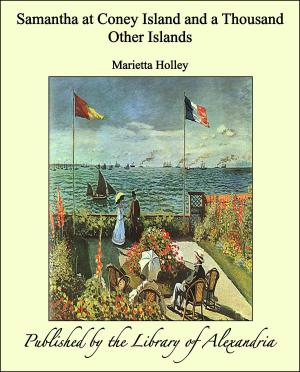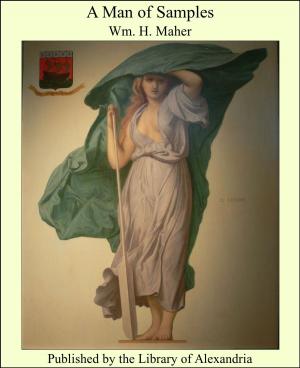With the Battle Fleet: Cruise of the Sixteen Battleships of the United States Atlantic Fleet from Hampton Roads to the Golden Gate, December, 1907-May, 1908
Nonfiction, Religion & Spirituality, New Age, History, Fiction & Literature| Author: | Franklin Matthews | ISBN: | 9781465571991 |
| Publisher: | Library of Alexandria | Publication: | March 8, 2015 |
| Imprint: | Language: | English |
| Author: | Franklin Matthews |
| ISBN: | 9781465571991 |
| Publisher: | Library of Alexandria |
| Publication: | March 8, 2015 |
| Imprint: | |
| Language: | English |
On December 16, 1907, there sailed from Hampton Roads, bound for San Francisco, a fleet of sixteen American battleships, the most powerful collection of warships ever assembled under the American flag and about to undertake the longest cruise that any fleet of any nation had ever made. It was ordered to make this journey of about 14,000 miles by President Roosevelt, Commander-in-Chief of the Navy by virtue of his office, for reasons which he did not deem wise to make public fully and which up to this writing have not been revealed. In his annual message submitted to Congress a few days before the fleet sailed the President designated the fleet, still known officially as the U. S. Atlantic Fleet, as the Battle Fleet. Rear Admiral Robley D. Evans was in command of the fleet, of the first squadron and of the first division of the first squadron. The ships of his division were the Connecticut, (Captain H. Osterhaus), Kansas (Captain C. E. Vreeland), Vermont (Captain W. P. Potter) and Louisiana (Captain Richard Wainwright). The ships of the second division of the first squadron were commanded by Rear Admiral William H. Emory and were the Georgia (Captain H. McCrea), New Jersey (Captain W. H. H. Southerland), Rhode Island (Captain J. B. Murdock) and Virginia (Captain S. Schroeder). The second squadron of the fleet and its third division were commanded by Rear Admiral Charles M. Thomas, and the ships of his division were the Minnesota (Captain J. Hubbard), Ohio (Captain C. W. Bartlett), Missouri (Captain G. A. Merriam) and the Maine (Captain G. B. Harber). The ships of the fourth division were commanded by Rear Admiral Charles S. Sperry, and his ships were the Alabama (Captain T. E. DeW. Veeder), Illinois (Captain J. M. Bowyer), Kearsarge (Captain H. Hutchins) and Kentucky (Captain W. C. Cowles). There were about 14,000 men on the ships and the value of the vessels and stores was about 100,000,000. The following compilation shows where the fleet stopped, how long each stay was and the distance travelled. Sailed from Hampton Roads, Va., December 16, 1907
On December 16, 1907, there sailed from Hampton Roads, bound for San Francisco, a fleet of sixteen American battleships, the most powerful collection of warships ever assembled under the American flag and about to undertake the longest cruise that any fleet of any nation had ever made. It was ordered to make this journey of about 14,000 miles by President Roosevelt, Commander-in-Chief of the Navy by virtue of his office, for reasons which he did not deem wise to make public fully and which up to this writing have not been revealed. In his annual message submitted to Congress a few days before the fleet sailed the President designated the fleet, still known officially as the U. S. Atlantic Fleet, as the Battle Fleet. Rear Admiral Robley D. Evans was in command of the fleet, of the first squadron and of the first division of the first squadron. The ships of his division were the Connecticut, (Captain H. Osterhaus), Kansas (Captain C. E. Vreeland), Vermont (Captain W. P. Potter) and Louisiana (Captain Richard Wainwright). The ships of the second division of the first squadron were commanded by Rear Admiral William H. Emory and were the Georgia (Captain H. McCrea), New Jersey (Captain W. H. H. Southerland), Rhode Island (Captain J. B. Murdock) and Virginia (Captain S. Schroeder). The second squadron of the fleet and its third division were commanded by Rear Admiral Charles M. Thomas, and the ships of his division were the Minnesota (Captain J. Hubbard), Ohio (Captain C. W. Bartlett), Missouri (Captain G. A. Merriam) and the Maine (Captain G. B. Harber). The ships of the fourth division were commanded by Rear Admiral Charles S. Sperry, and his ships were the Alabama (Captain T. E. DeW. Veeder), Illinois (Captain J. M. Bowyer), Kearsarge (Captain H. Hutchins) and Kentucky (Captain W. C. Cowles). There were about 14,000 men on the ships and the value of the vessels and stores was about 100,000,000. The following compilation shows where the fleet stopped, how long each stay was and the distance travelled. Sailed from Hampton Roads, Va., December 16, 1907















